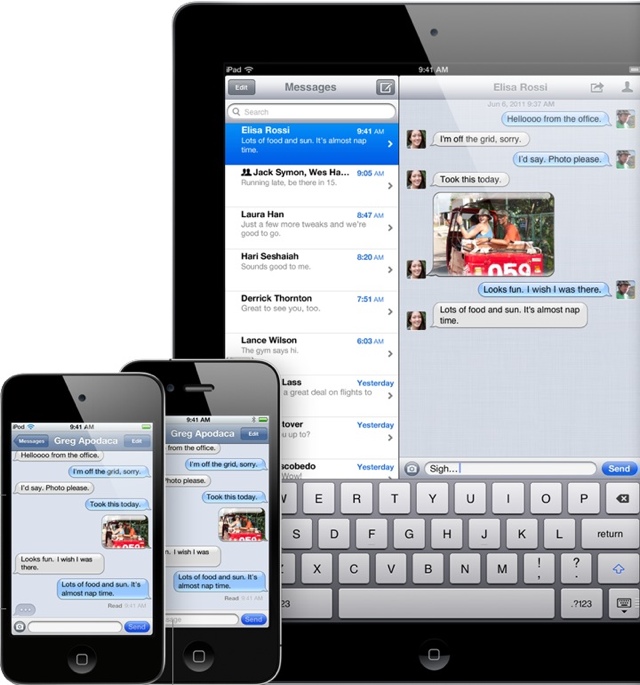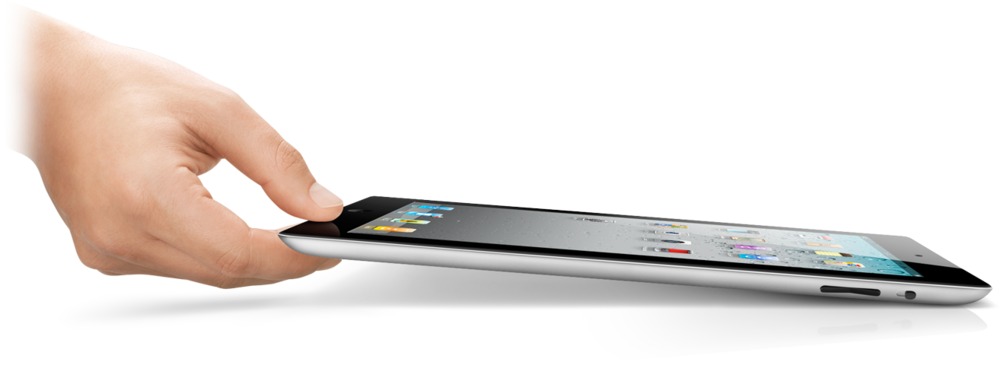This is my first ever hands-on video. I decided to show you all iOS 5 beta 2. I plan to release subsequent videos as later updates roll out. My apologies on the video quality, I would normally use my iPhone to record video, but obviously that would not work in this circumstance.
Cutting the Cord
 People are genuinely unsatisfied with the current state of cable service. Although cable providers have tried to improve by offering online viewing, better cable box systems, and mobile apps, still consumers are unhappy with service. They want HD viewing anywhere with an intuitive UI designed to find the shows you want and then get out of your way. Instead, cable companies have been inflexible and not given customers all they wanted. Services like Hulu and Netflix have helped satisfy consumers’ wants, and now people are attempting to “cut the cord”. This is a small movement and not many people have made the jump yet, but more will and cable companies will be in serious trouble.
People are genuinely unsatisfied with the current state of cable service. Although cable providers have tried to improve by offering online viewing, better cable box systems, and mobile apps, still consumers are unhappy with service. They want HD viewing anywhere with an intuitive UI designed to find the shows you want and then get out of your way. Instead, cable companies have been inflexible and not given customers all they wanted. Services like Hulu and Netflix have helped satisfy consumers’ wants, and now people are attempting to “cut the cord”. This is a small movement and not many people have made the jump yet, but more will and cable companies will be in serious trouble.
What needs to be done? I will discuss what cable companies need to do to retain earn back customer satisfaction and what services like Hulu need to do to allow more people to cut the cord.
To succeed cable companies must first create set-top boxes that people want to use. These need to work with my iOS, Android, or whatever else I my have so I can use my device as a remote or TV guide. The apps need to be intuitive and most importantly, work. Also, they need to have easy to use and navigate interfaces that even my grandmother could use. Cable companies need to make it easy to trade in your old and decrepit cable box for a new one for, say, a one-time five dollar fee. Also, I have managed to memorize all of my favorite channels, but only the SD ones. A good cable box would automatically switch me to the HD channel without me noticing. Optimally there would be NO SD channel, but let’s take it one step at a time for now.
This sounds great, I know, but what about the cable companies? They have to make money too right? They do, but this about more than a set-top box, this is about them staying afloat. They need to keep customer loyalty, keep users from switching to Hulu and Netflix, and keep people paying them every month. Otherwise, I believe there is a point of no return where the IPTV will gain higher traction than cable companies with all the benefits of more modern technology than the crap they are selling us now.
Services like Hulu and Netflix need to first, try to have the best line up of shows possible. Second, be on as many devices as possible (while doing it well). [excuse my punctuation, I am trying to be more mainstream.] And lastly, customers need to know not only that these services exist, but that these could be viable replacements for cable and could save them tons of cash each month.
All in all, the pending revolution in cable and Internet streaming services will be a win for consumers, giving them more control and better prices. The clock is ticking for the cable companies, I don’t want anyone to lose their job, but it will happen if they do not move fast.
On Openness
Right now everyone knows the two big players in the smartphone market, iOS and Android. iOS has been called “closed” and Android “open”. What do these terms really mean? In Android’s openness an app can have great system integration. However, apps can do whatever they want and are often crappy. (In general, don’t get all worked up about some excellent app, I know they are out there too.) In iOS, an app has very specific rules to follow to be approved. This has created many very high-quality apps in the App Store, more than are on Android. Unfortunately said apps also do not have the same sort of system integration that Android apps have. Take, for instance, Google Voice. Google Voice on Android integrates with the dialer and can become an easy and elegant replacement for the default dialer, whereas on iOS it work more like an email app, and cannot even compare to using the phone app. Both platforms have many of the same important apps like Facebook, Twitter, Foursquare, Pulse, and so on; what makes a big difference is the hundreds of thousands of other apps on the store. This is where iOS is winning for me. Apple’s commitment to quality and not quantity is a very smart move. Many think this a good idea, and many more think this is not a good idea. Many have condemned Apple for tightly controlling the App Store, but what do they really want? Integration? Flash? 10,538 fart apps?
WWDC 2011 Keynote
At WWDC 2011, Steve Jobs, Scott Forstall, Phillip Schiller, and Craig Fedhrigi(I can’t spell his name) introduced Apple’s two new operating systems, OS X Lion, and iOS. Additionally iCloud, Apple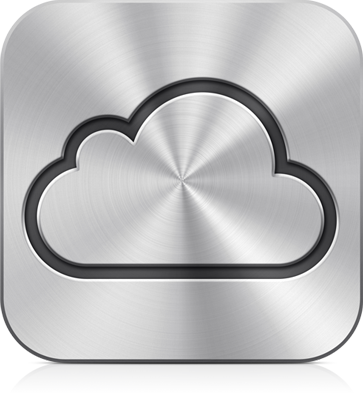 ’s new MobileMe replacement was announced to much applause.
’s new MobileMe replacement was announced to much applause.
Mac OS X Lion brings features and innovations “back to the Mac” for a dramatic rethinking of even the most basic functions of the operating system such as scrolling, apps, and versioning.
iOS 5 has a (finally) completely revamped notifications system, bringing unobtrusive updates to your lock screen and throughout the rest of the operating system. iMessage which brings a native IM and MMS client for iPhone, iPad, and iPod Touch. Newsstand which brings e-magazines to your device. A PC-free experience with OTA updates and backups. System-wide Twitter integration. Also, a self-explanatory reminders app.
iCloud is Apple’s MobileMe replacement. It is completely free with the small exception of iTunes Match witch brings your ripped (or pirated) content tot eh cloud for $25 a year. Way cheaper than Amazon and possibly Google. It syncs not only your mail, calendar, and contacts, but now your photos, app data, backups, music, and documents.
Now you can go to Apple’s website and read about all these features, or better yet watch the keynote in its entirety. So instead of focusing on these features and tweaks, I will try to provide meaningful insight into what was announced and where Apple is headed with these products.
With FaceTime Apple circumvented carriers. With iMessages Apple has down the same thing. iMessages is not dependent on carriers and does not require a texting or data plan. iMessages also is a BBM killer. No longer can BlackBerry users get away with saying how addicted they are to BBM. iCloud signals Apple thinking ahead and syncing everything you have across their ecosystem for free. Twitter integration is likely the start of a very good relationship between the two companies. Facebook was not to be heard or seen of… anywhere. But I personally hope that the two companies get on good terms considering that only one of my friends is on Twitter, but 220 friends on Facebook. So currently, Facebook is a more meaningful partner for me. Apple also seems to be committed to fixing problems and suggestions of the general public. We have seen this with Multitasking, homescreen wallpapers, apps; and now notifications and Twitter integration. There are still some fundamental things that Apple will not do such as adding explicit material, unsigned apps, and a “normal” file system to their iOS operating system.
(Image Credit: Apple)
I will update this post with further insights as more information becomes available and until iOS 5 is released.
Windows 8 at D9
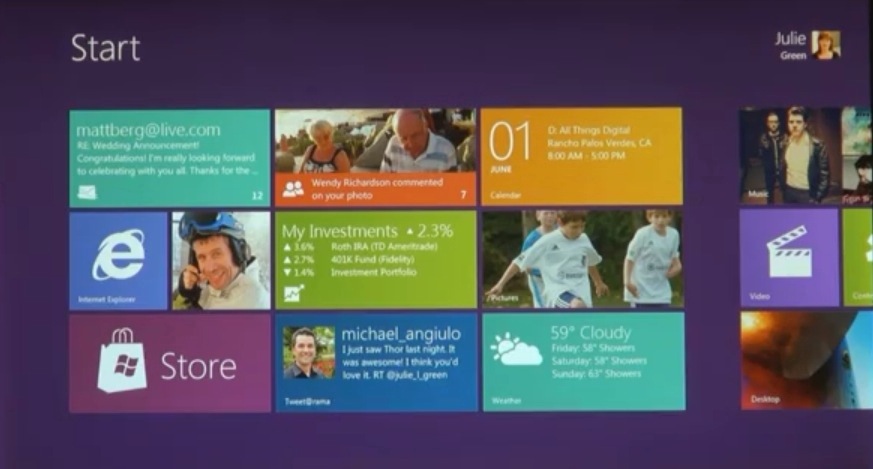
Google I/0
AT&T Buys T-Mobile
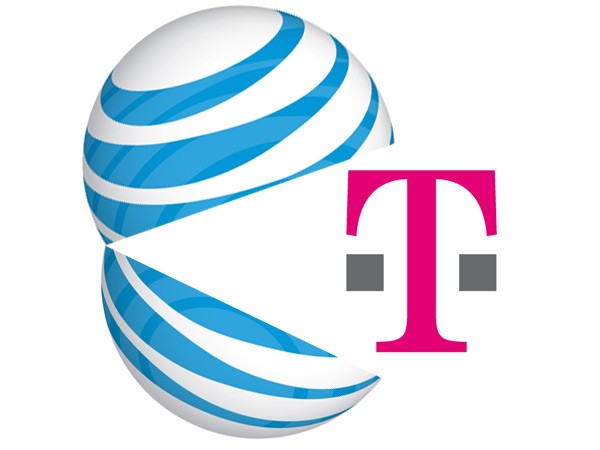 First, the myth-busting: AT&T has not yet bought T-Mobile.
First, the myth-busting: AT&T has not yet bought T-Mobile.So this is why print is dying.
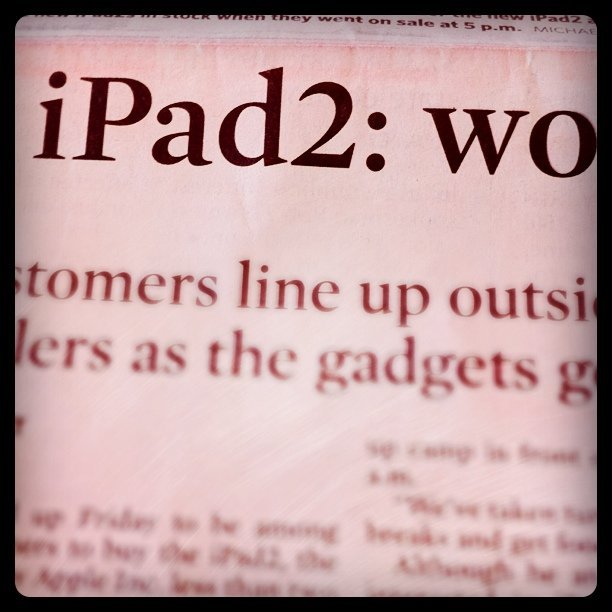 The local newspaper can’t spell iPad 2 the right way.
The local newspaper can’t spell iPad 2 the right way.
At first I intended for this to be a little joke, but after further thought I realized that this really signals a meaningful disconnect in the local publishing industry. If the newspaper can’t even spell the name of an unequivocally hit product in the tech industry, how can they relate to any sort of younger audience? My local newspaper does have an app, but it has not been updated for about a year and only to add death notices and obituaries (don’t ask me what the difference is). Their website looks like it was designed in 2004 (and it probably was) and it does not even feature a technology section. Now they will eventually update their app, they just added an “iPad edition” app, but they will still be behind the curve. Now I can’t judge my local paper too much, because I never read them. I read articles on Pulse News Mini and soon on Flipboard (did you hear they are coming to iPhone next?) I read articles from Engadget, TechCrunch, Gizmodo, etc. Clearly, the local publishers cannot relate to younger audiences the way that they need to. If the publishers continue to not relate to the younger consumers they will lose valuable newspaper subscriptions an eventually run out of business.
iPad 2
As if there is not already enough reviews and hands on about the iPad 2, I feel like I should put my two cents in.The iPad 2 is a great upgrade from the original iPad. With a thinner, lighter, and faster iPad Apple hopes to pin down the tablet market for a whole year again. Last year may have been the year of iPad, but this is not 2010. How can 2011 be the year of iPad 2?Although Apple has seriously beefed up the iPad 2 with cameras, a new processor, and smart covers, all while making it thinner and lighter. Only time will tell what the year holds with new tablets like the PlayBook and the TouchPad, but before judgment is passed on the iPad 2, I think we should wait and see what iOS 5 holds. The iPhone 4 could have been passed off as a small upgrade if it was not announced along with iOS 4. Apple usually builds its products with future enhancements in mind. So go and buy that iPad 2, enjoy FaceTime and a smart cover or three, and savor thoughts of iOS 5.Lastly, an iPad 3: Don’t hold your breath, iPad 2 is a big enough step forward to take on its own, if you don’t have an iPad yet now is the time to buy… or at least it will be on March 11.
(Image Credit: Apple)
